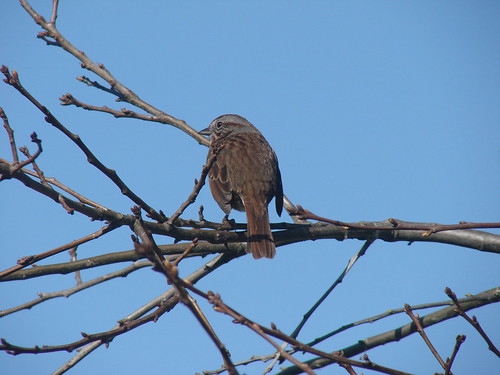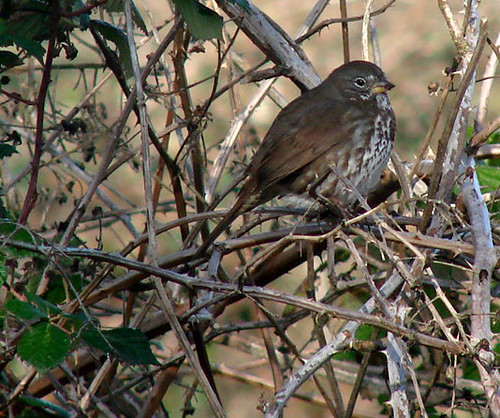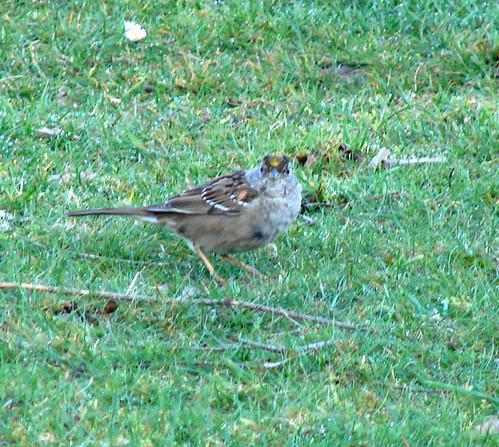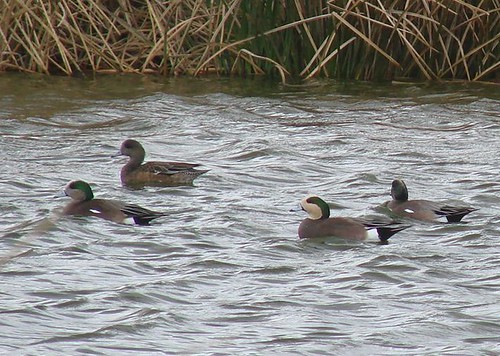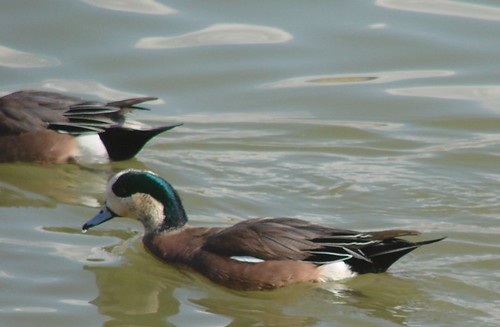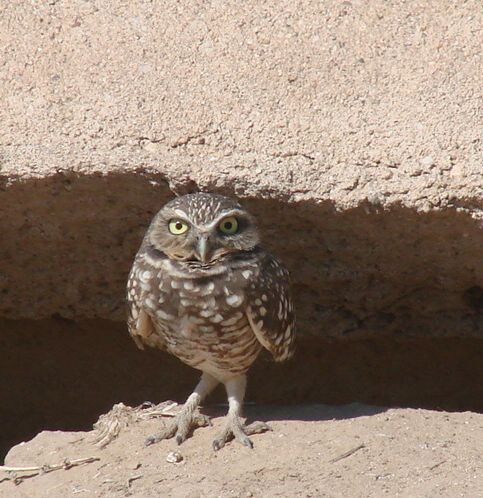As hawk migration in the East slows to the final trickle of Rough-legs, Red-tails, and Golden Eagles, things are just getting good here in southeast Arizona. Between a visit to the Lower Santa Cruz and a short day yesterday in the Sulphur Springs Valley, I saw eleven species of hawks and allies, including Osprey, Ferruginous Hawk, and Bald Eagle, plus Burrowing and Great Horned Owls.
Here as at many of the other great winter raptor sites, the falcons are an especially fine part of the show. American Kestrels are common everywhere right now, from city streets to empty desert.
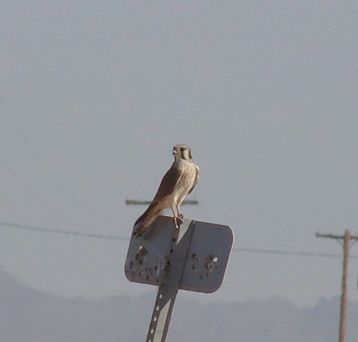
The majority, like this one on the Santa Cruz Flats Friday, are females–presumably more able to handle December’s cold days than the smaller, more strictly insectivorous males.
Equally catholic in their habitat choices are Peregrine Falcons. One particularly large adult has set up housekeeping on the corner of Oracle Road, where a male American Kestrel has made it his task to keep his larger cousin from getting any rest at all. Apparent migrants are still passing through, too, among them this savage-looking and obviously well-fed juvenile at the Marana Pecan Grove on Friday.
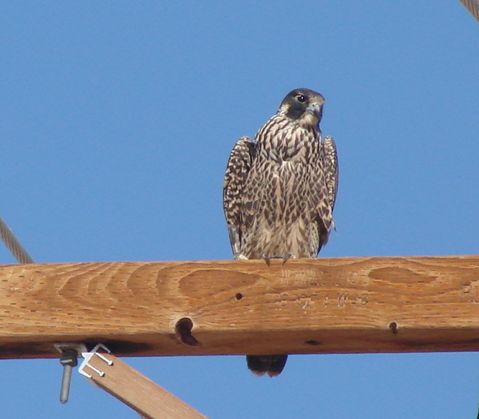
No winter raptor spoils us more than Prairie Falcon, deceptively–even dangerously–common in the cool season. This bird is globally anything but abundant, but it’s a slender winter’s day afield indeed when we don’t see three or four. There are already several installed on their winter territories in town, and dusty agricultural roads are carefully watched over by this shy and spectacular species.
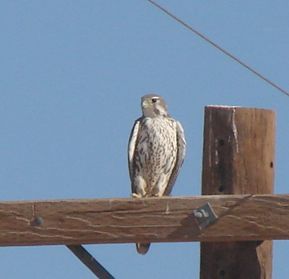
This one was eying the sparrows in a brushy row of mesquites–even as a Bendire’s Thrasher sang from the wire above.
The scarcest of our winter falcons (well, unless you count genuine wild Aplomados, which may not occur at all) is the dashing little Merlin, certainly the model for the cartoons’ Chicken Hawk (remember him?). I couldn’t find a one on the Flats on Friday, but Darlene and I had great luck yesterday, with a pale Richardson’s Merlin north of Willcox and a fine columbarius-type male near Elfrida.
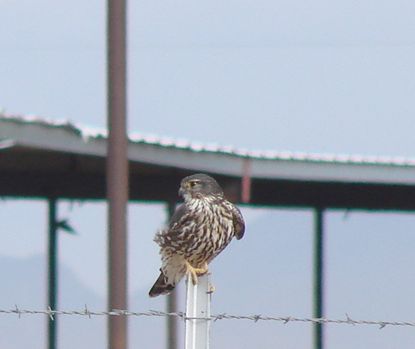
This bird, perched at a dairy feedlot, must have thought he’d found paradise: hundreds of White-crowned Sparrows, thousands of icterids, and no doubt many metric tons of mice to keep him hale and happy through the winter–and thus to keep the birders hale and happy who are lucky enough to see him.



